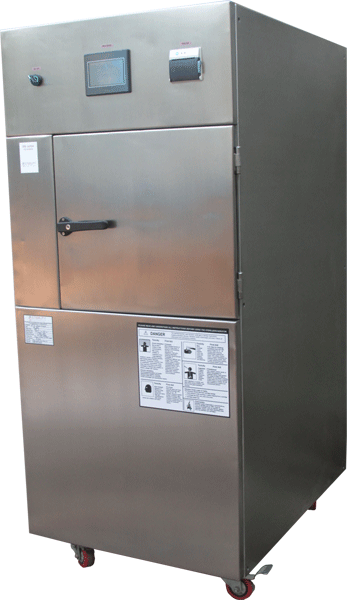Choosing a sterilizer for your food and beverage industry business will ensure that your product is sterilized and ready to serve. This will help prevent cross contamination and protect your consumers. If you’re considering a sterilizer, there are many options to consider, including Gamma irradiation and In-house processes.
Why Use Ethylene Oxide (EO) to Sterilize Food and Beverage Products?
Using Ethylene Oxide (EO) to sterilize food and beverage products is a common practice. This sterilization technique is used to inactivate microorganisms that may be harmful to consumers. The process involves the use of ethylene oxide to sterilize items.
This process also utilizes time and relative humidity to achieve the desired results. The time and relative humidity are controlled to keep the sterile articles in contact with the gas and ensure a consistent sterilant concentration.
Ethylene Oxide is a colourless, odourless gas that is considered to be an excellent sterilant. It is also used in the healthcare industry to sterilize heat and moisture sensitive items.
The Ethylene Oxide sterilization process is highly efficient, but it involves a number of steps. The process must be able to maintain its effectiveness throughout the decontamination cycle.
The process is performed in a vacuum-tight chamber, and the entire contents of the chamber are sterilized within a defined time period. In addition to the gas itself, it is important that the products are properly packaged to prevent dilution and contamination with the EtO gas.
What are the Precautionary Practices with ETO sterilizer?
There are a number of precautionary practices to keep in mind when using a ethylene oxide (ETO) sterilizer. The main one is to keep the door ajar for at least a few minutes.
A hood or metal canopy is also a good idea. You should connect the hood or canopy to a dedicated, non-recirculating ventilation system. The system should provide a steady supply of air and exhaust gases. It is recommended that you also transfer materials from the sterilizer to the hood for final off-gassing.
Getting the most out of your ethylene oxide sterilizer requires precise installation and maintenance. Checking the cylinder piping for leaks is also important. In addition, you should have hand valves on your gas supply lines. These valves will minimize leakage during cylinder changes.

Why is Sterilization Necessary in Food and Beverage Industry?
Various methods of sterilization for the food and beverage industry are used to destroy microorganisms. These methods can be divided into different categories based on the process used. They vary in advantages and disadvantages. Some of the methods include radiation, ionizing, and nonthermal methods.
Sterilization is an effective process used to protect food products from contaminating microorganisms. The process typically includes three steps: sterilization, conditioning, and post-treatment. The purpose of sterilization is to eliminate unwanted contaminants and increase the life of packed food products.
Different industrial sectors have their own preferred sterilization method. They include dairy ingredients, meat & poultry, beverages, seafoods, spices, and dried fruits & vegetables.
In Conclusion
Among the different methods of sterilization, ETO sterilization is one of the most popular methods. This is because it is very effective in sterilizing products. In addition, the sterilization process can be performed in a safe and controlled environment.
In addition to sterilizing food, it can also be used to prevent the growth of unwanted biological organisms. It can also lengthen the shelf life of food items. This is because it kills microorganisms and prevents further reproduction. It can also be used to sterilize plastics and heat-sensitive materials. In addition, it can be used to sterilize items that have complex geometries.
Frequently Asked Questions
1. What are the common methods of sterilization used in the food and beverage industry?
A. Common methods of sterilization include heat treatment (such as autoclaving and pasteurization), irradiation, chemical sterilization (using agents like ethylene oxide), and filtration.
2. Which method of sterilization is most suitable for different food and beverage products?
A. The choice of sterilization method depends on various factors, including the type of product, its sensitivity to heat or radiation, packaging requirements, and regulatory guidelines. Each method has its advantages and limitations.
3. How does sterilization affect the nutritional value and sensory attributes of food and beverage products?
A. Sterilization processes can affect the nutritional value and sensory attributes of food and beverage products to some extent. Heat treatments, for example, can lead to nutrient losses and changes in taste, texture, and color. Manufacturers aim to strike a balance between product safety and maintaining the desired quality attributes.
4. What are the regulatory requirements for sterilization in the food and beverage industry?
A. Regulatory requirements vary depending on the country and region. Food safety regulations typically outline specific guidelines and standards for sterilization processes, microbial limits, labeling, and documentation. It is essential for food and beverage manufacturers to comply with these regulations to ensure product safety and regulatory compliance.
5. How can I validate the effectiveness of the sterilization process?
A. Validating the effectiveness of the sterilization process involves conducting microbial testing, using biological indicators, monitoring critical process parameters (such as time, temperature, and pressure), and ensuring proper documentation. It is important to establish a robust validation process to ensure consistent and reliable sterilization.
6. What are some challenges or considerations when implementing sterilization in the food and beverage industry?
A. Implementing sterilization in the food and beverage industry can present challenges such as equipment selection, process optimization, cost-effectiveness, packaging compatibility, and regulatory compliance. It is crucial to work closely with experts, conduct thorough risk assessments, and adhere to best practices to overcome these challenges.
7. How can I ensure the sterility of packaging materials used in the food and beverage industry?
A. Packaging materials play a critical role in maintaining the sterility of food and beverage products. It is important to use packaging materials that are compatible with the chosen sterilization method and provide an effective barrier against microbial contamination. Quality control measures, including testing and validation, should be implemented to ensure the sterility of packaging materials.





